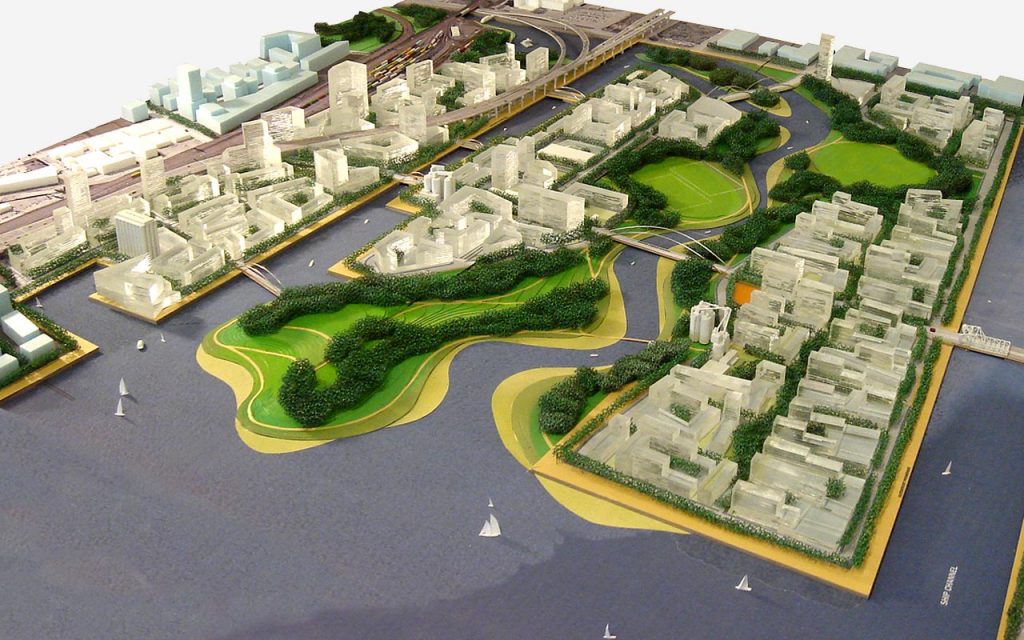Nature Is Culture Is Nature
By Todd Smith
Date
March 26, 2019“We need to view the fragility of the planet and its resources as an opportunity for speculative design innovations rather than as a form of technical legitimation for promoting conventional solutions.” Mohsen Mostafavi and Gareth Doherty, Ecological Urbanism, Harvard University, 2010.
“Urbanism needs to become environmentally literate, and environmental design needs to become culturally literate.” Susannah Hagan, Ecological Urbanism: The Nature of the City, London, 2014.
What does ecology mean in design? What is your working definition, if you have one? The paradigms of ecology have long been inserted into design dialogue – think Patrick Geddes’ social ecologies or Ian McHarg’s Design with Nature. This evolution of design thinking is now set in relief against a global challenge of an unpredictable climate, shifting capital, and accelerated urban migration. As professionals working with the built environment, how do we address these challenges and how are the emerging ideas of ecological urbanism part of an appropriate response?
Ecological urbanism views the city as a literal and metaphorical ecosystem. Literal, in that cities exist in reality alongside plant and animal ecologies, and metaphorical in that like a woodland or a wetland, cities have feedback loops, metabolic flows, and internal and external forces. In her book, Ecological Urbanism: the nature of the city, Susannah Hagan focuses on the framing and practice of urban design within the conceptual and scientific framework of ecology. Ecology is the study of earth’s habitats, and cities are now the default human habitat. As the city is increasingly understood to be a literal ecosystem, ecological urbanism presents an evolving design paradigm to which interdisciplinary practice strives to create an artificial ecosystem – “cities that achieve the same interdependent efficiencies and life-preserving redundancies as natural ecosystems”.
Landscape urbanism, as the acknowledged predecessor of ecological urbanism, is a framework that uses the landscape as inspiration to reconsider city planning and design. Within the last thirty years, as urban planning has focused more on social science and as neo-traditional models of town planning have become the new normal, landscape urbanism has sought to use landscape as the organizer and template with which to deal with post-industrial urban renewal and a bridging of culture and nature.
In his new book, Landscape as Urbanism: A General Theory, Charles Waldheim claims that landscape architecture is the design discipline best positioned to create more sustainable cities through ecological urbanism. He remarks that as cities are increasingly complex, a systems-based approach is needed to sort through all the inter-relationships reflected in current urban, political, economic, and environmental issues. A systems-based design approach manages the dynamic interrelationships between cultural and environmental systems. He states that ecological understandings can inform planning and urban order, and this design agency offers an integration of land use, environmental stewardship, public participation, and design culture. For example, master planning can use systems thinking and ecological urbanism to arrive at the best foundation for future site evolution rather than presenting the plan as fixed in time. Landscapes are temporal; they are a spatial organization that is continuously developing. If this systems-based approach is to be successful, it needs to design, integrate and express complex systems and social processes in ways that are fundamentally humane.

Model of Lower Don Lands, credit Michael Van Valkenburgh Associates, Inc.
For their recent publication, Projective Ecologies, Nina-Marie Lister and Chris Reed compiled a collection of essays which speak to landscape design’s focus on process and systems thinking. This newly defined concept of landscape architecture is leading to an integrated planning and design approach, perhaps replacing architecture as the building block for urban development. Landscape architecture will not only provide decorative open spaces for built objects, but it can be a design leader in urban and suburban development. This approach is supported by a new understanding of the role ecological sciences play.
As a practicing landscape architect and arborist, I see the benefit of integrating landscape theory and design ideas to address urban challenges and benefit the project as a whole. When we talk to each other more in the early stages of our work, we learn new perspectives and see how disciplines can work synergistically. Most importantly, we are all forced to reflect on what ecology means to our daily design praxis – if there were ever a time to begin inserting the ideas of ecological urbanism into your workflow, that time is now.
Todd Smith is a landscape architect and certified arborist at IBI Group and has over 18 years of industry experience incorporating thoughtful and sensible design solutions into the needs of expanding urban areas and communities. At scales from multi-residential to regional, he is able to assess the conditions of existing and future needs as they pertain to provision of open space and parkland or to moving goods and people around the region. Parallel to this, the aesthetic and ecological conditions and experience exist as equally important parameters to achieve the strongest design solution.
IBI Group’s LEAD program is designed to support employees who have the potential and desire to be future leaders within IBI Group; with the goal of assisting participants to learn about themselves, enhance new skills, and develop leadership competencies.







